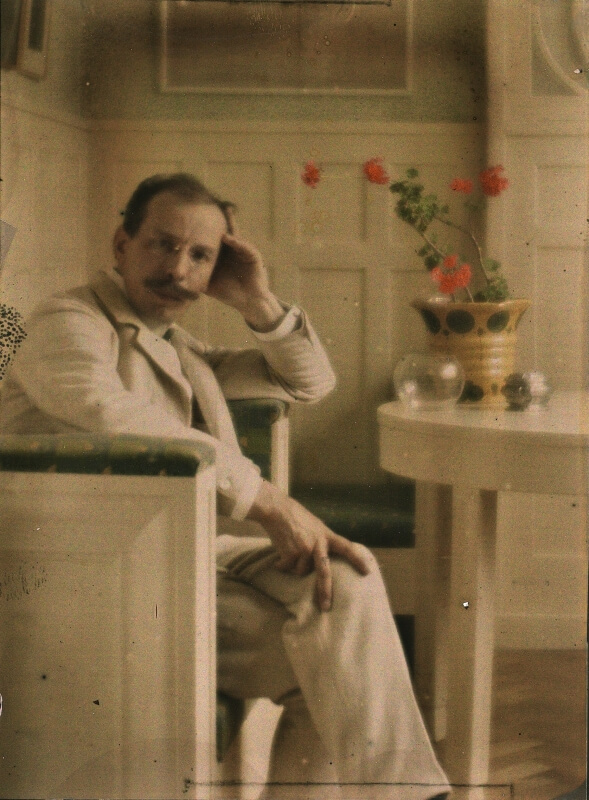Carl Christian Heinrich Kühn (25 February 1866 in Dresden – 14 September 1944 in Birgitz) was an Austrian–German photographer and photography pioneer. Heinrich Kühn is regarded as one of the forefathers of fine art photography, which helped photography establish itself as an art on its own. His photographs closely resemble impressionist paintings, with their frequent use of soft lighting and focus. Kühn was part of the pictorialist photographic movement. Kühn mainly used the gum bichromate technique, applied in several layers, and thus allowing for previously unseen color tonalities.
In 1911, Kühn invented the Gummigravüre technique, a combination of photogravure and Gum bichromate. In 1915 he developed the Leimdruck technique, which uses Animal glue as Colloid and produces pictures similar to gum prints. He also invented the Syngraphie, a forgotten technique that uses two negatives of different sensitivity to obtain a larger tonal spectrum. Kühn used Autochrome from its appearance in 1907; his Autochromes have been called
"ethereal dreams of childhood, full of vaulted sunny skies and giddy perspectives, as gloriously cathartic as they are emotionally charged".
Source: Wikipedia
Heinrich Kühn, originally Carl Christian Heinrich Kühn was born on February 25th, 1866 in Dresden, Germany. Kühn was one of the central figures of international art photography at the beginning of the twentieth century. His lifelong goal was to establish the photographic image as a medium for rendering an artistic vision as precisely and creatively as in painting and drawing.
Along with
Alfred Stieglitz and other friends, Kühn made the stylized photographic an element of the gesamtkunstwerk, which translates to
"ideal work of art", which the Secessionists aspired to create. The most important tool for this was the gum bichromate process that he had perfected and the free choice of paper and pigment, which made the picture look more like a print than a conventional photograph. This allowed him to deliberately alter the brightness contrasts to fit his notion of the image and dissolve its sharpness. Too much sharpness was considered "non-artistic" because it veered away from painting, thus eliminating it where he saw fit. Kühn reduced the romantic cosmos of
"Pictorialism" to the point of abstraction, thus exhibiting a sense of timelessness and balance.
Kühn's work is represented in many collections, including
Eastman House Rochester (New York),
Metropolitan Museum of Art (New York),
Museum of Modern Art (New York),
Museum of Fine Arts (Boston), Kupferstich-Kabinett (Dresden), Hanmburgische Lichtbildstelle (Hamburg),
Museum of Fine Arts (Houston), and Musée d'Orsay (Paris).
Source: Peter Fetterman Gallery
